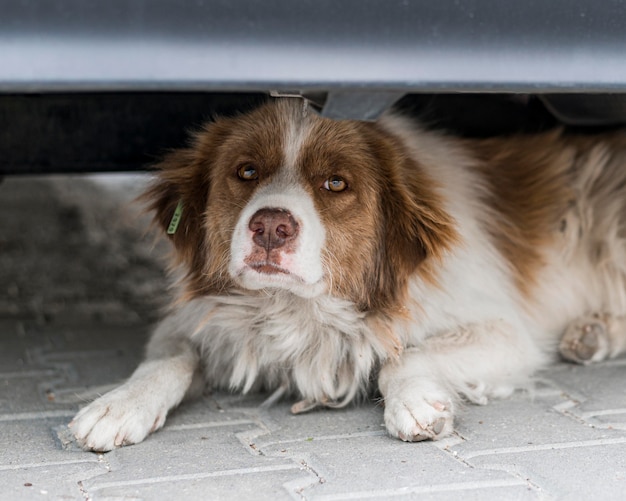

Can Shyness in Dogs Be Cured?
Much like a timid bird perched at the edge of its nest, shyness in dogs can be a complex and sensitive issue. You might be asking yourself, “Can this apprehensive nature really be cured?” Let’s dive into the topic of overcoming shyness in our furry friends. We’ll explore everything from understanding the root causes to implementing effective training methods to help build confidence through socialization and creating a safe environment. So, is overcoming shyness truly possible? Stick around to find out!
Understanding Shyness in Dogs
Understanding why dogs become shy is essential to helping them overcome their fears. Shyness in dogs can arise from various factors, including genetic predisposition, lack of socialization, abuse, or trauma. Recognizing the signs of shyness, such as avoiding social interactions, hiding, trembling, excessive licking, and fear-related aggression, is crucial.
If a dog is genetically predisposed to shyness, this means they’re biologically more prone to it. A lack of socialization during their early years can result in fear and anxiety around unfamiliar people or environments. Dogs that have experienced abuse or trauma might exhibit shyness as a defense mechanism.
Creating a safe, secure space for your shy pup is critical. This could be a designated area in your home where they can retreat when feeling overwhelmed. Positive associations with socialization, using treats and rewards, can also be helpful. Gradually exposing them to new people, animals, and environments, combined with positive reinforcement, can gradually help them build confidence.
For severe shyness, consider seeking professional help. A qualified dog trainer or behaviorist can offer tailored guidance and create a training plan focused on building confidence and reducing fear. Remember to avoid forcing interactions and to let your dog progress at their own pace.
Identifying the Root Causes
To effectively address and alleviate shyness in dogs, it’s important to identify the underlying reasons. These can include genetic predisposition, early socialization experiences, and traumatic events or abuse. Understanding the specific causes aids in tailoring treatment and training approaches to help them gain confidence and overcome their fears.
Genetic Predisposition
Some dogs might naturally be more reserved due to their genetic makeup. Knowing if genetic factors play a role in your dog’s shyness is crucial for addressing their behavior. While genetics may make a dog more prone to shyness, it doesn’t mean it can’t be managed or improved. Behavioral training and confidence-building exercises can significantly help.
Early Socialization Experiences
Lack of socialization during a dog’s early life stages can result in chronic fear and anxiety. If a puppy isn’t exposed to various social settings, people, and other animals, they may grow up to be shy. Gradual exposure during these formative years is key to preventing shyness in the long run.
Traumatic Events or Abuse
Past trauma or abuse can also cause lasting shyness in dogs. Understanding this history can guide you in offering the support they need. Providing a loving, secure environment and gentle social interactions can help them trust again.
Conclusion
Getting to the root of shyness in your dog is the first step in helping them become more confident and comfortable. By understanding the causes, creating a safe space, and using positive reinforcement, you can help your dog gradually gain the confidence they need to navigate the world. With patience, consistency, and perhaps a little professional advice, your shy dog can lead a happier and more fulfilling life.





